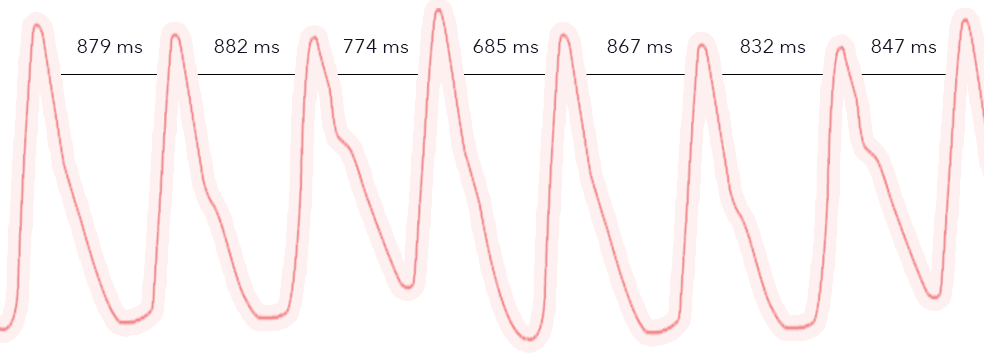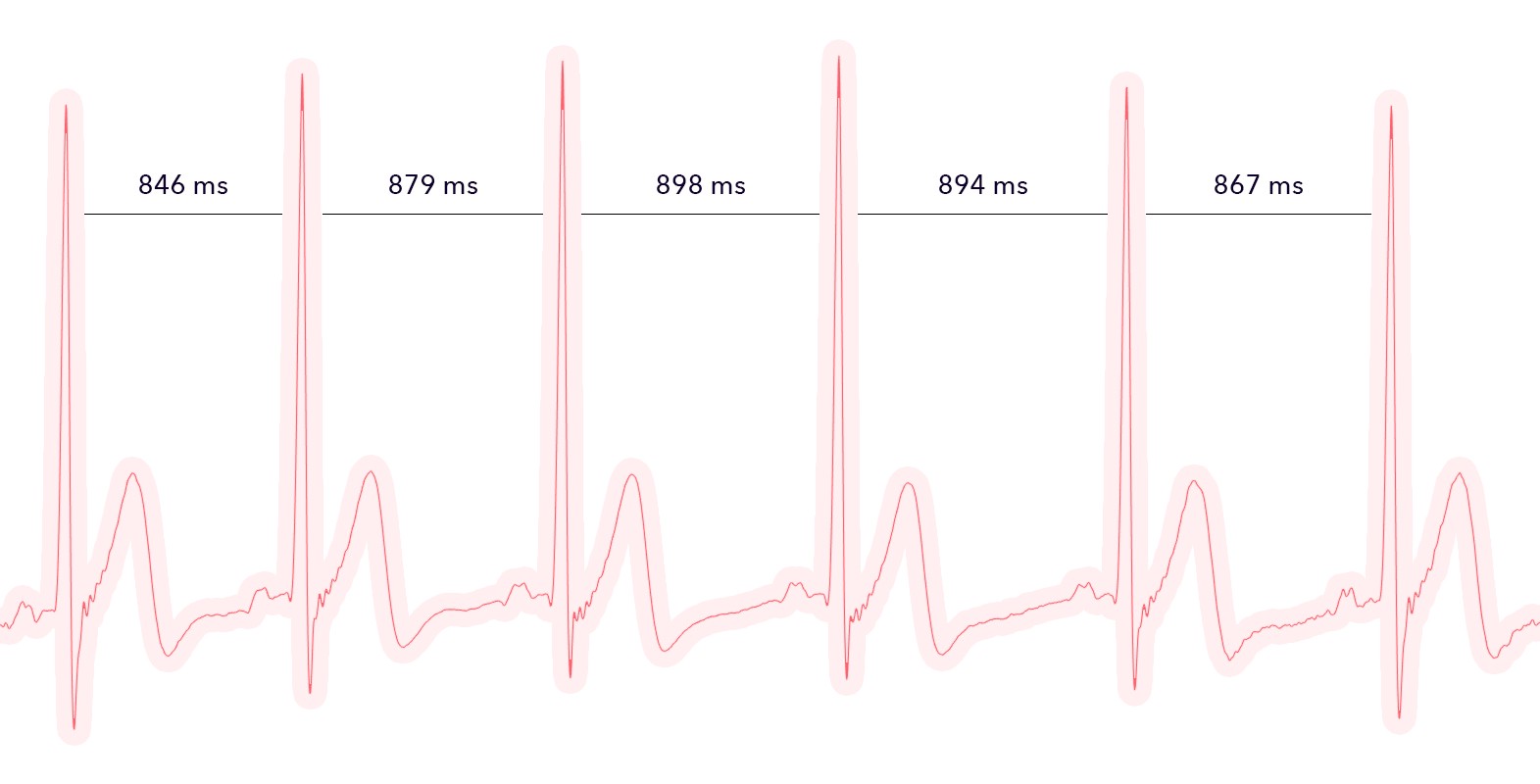To dogłębne porównanie zestawia opaski na klatkę piersiową z nadgarstkowymi trackerami pod kątem dokładności, fizjologii i zaawansowanych metryk, na których polegają sportowcy. Pokazujemy, dlaczego ciągły zapis EKG czy monitoring oddechu wciąż wymagają elektrod.
With the current state of wearable technology, reading and collecting biosignals is a real feast for health and sports enthusiasts. But, as is often the case, the more we have, the more we want.
And the more we expect.
The restless heart of an athlete being no different. So why do I think a chest strap is better than an optical wrist heart rate monitor (OHRM)? Short answer — a chest strap is more accurate. Now let me expound why and why that matters in your training.
Differences in Heart Rate Measurements
 Optical sensors are often exposed to external noise sources, leading to inaccurate readings
Optical sensors are often exposed to external noise sources, leading to inaccurate readings
Wrist heart rate monitors use optical sensors to calculate heart rate. While this is a relatively precise method to measure HR, it’s not the best one during workouts. Certain conditions, e.g., ambient light, moisture, or thick skin, will affect the reading.
Chest straps, on the other hand, use small electrode pads to collect electrical signals of the heart. This type of HR measurement — electrocardiography (ECG) — isn’t affected by ambient light during sports and is in turn much more accurate (99% of accuracy compared to a hospital-grade ECG device).
 Heart rate variability calculated from ECG has a better signal-to-noise ratio during the workout than from the optical sensors
Heart rate variability calculated from ECG has a better signal-to-noise ratio during the workout than from the optical sensors
With those basic differences out of the way, let’s now focus on why such precision is better for your training.
Looking for a perfect chest strap?
Don't let exercise be the first thing to fall off your busy schedule. Learn how to work in a workout―and make it really effective.
Learn moreHeart Rate Accuracy during Workouts
If you’re an ardent athlete, everything pertaining to your heart directly translates into your overall fitness and the efficiency of your training. For example, how quickly or how slowly your heart recovers from an intense activity can tell you a lot about your fitness.
How your heart performs while you’re exercising is equally important — knowing your HR is crucial to make a training session an absolute fitness-boosting killer or an endurance-improving activity. Sometimes long-term inconsistencies in the HR reading can negatively impact your training goals.
That’s why precision is so important, particularly during HIIT routines or running intervals. These types of workouts entail lots of body movement for which wrist heart-rate monitors using optical sensors weren’t designed — maintaining on-target HR measurement with all that movement and rapid HR changes involved generates inaccuracies. Readings from a chest strap will remain unaffected by motion artifacts, always giving you a precise value.
Chest Heart Rate Monitors are Feature Rich
Compared to a wrist OHRM, a chest strap is also more versatile, allowing you to collect and analyze more signals your body generates.
Chest HRMs Have Better ECG Quality
I’m aware of all the buzz around Apple Watch ECG capability, but accuracy aside, there’s a significant downside to how you take an ECG. Convenience. You need to maintain a closed circuit to do it, i.e., touch your finger to the crown. While it’s hardly an issue with a short ECG measurement, things get a bit cumbersome when you think about a several-hour-long reading — an ECG is the most valuable when taken for longer periods of time.
ECG is key to early diagnosis of various heart-related conditions. However, short readings can indicate absolutely no issues in 10 consecutive measurements, only to finally register something during the 11th reading, something that, in fact, has been going on in the heart all the time, but not when you were taking an ECG for those 10 times.
You will learn much more about your heart with at least a 12-hour ECG measurement, ideally performed during varying levels of physical activity so that any underlying heart ailment has a chance to show itself. A chest strap is by design a closed circuit, so the measurement is taken while you go about your day, giving you an accurate and convenient way to check the condition of your heart.
Chest HRM Can Track Respiration Rate
Respiration rate, along with heart rate, is another marker for workout intensity and your fitness. In fact, your breathing frequency responds faster than heart rate to variations in intensity. Thus, analyzing your respiration rate during and after a workout session can tell you exactly how hard that training was and what was your average respiration rate.
Another use of measuring respiration rate is recovery analysis. So for example, during a cycling HIIT workout, you can see how fast your body recovers between pace changes.
Collecting and tracking your respiration rate data can also help you see your fitness progress. The more you exercise, the less time it will take for your breathing to return to its resting rates after you finished working out.
Temperature Readings Are More Accurate from Chest HRM
You can use skin temperature taken from the area nearest your core as a helpful indicator during temperature training.
Heat Acclimation
Training in the heat has the potential to improve blood plasma volume and also to:
- reduce blood lactate
- increase skeletal muscle force
- decrease core temperature
- improve cardiovascular fitness
- increase performance during cool-temperate conditions
Keep in mind, however, that this type of workout regime is dangerous and can have serious health consequences when done without proper supervision. But if you would like to try heat acclimation training, do it in short and slow daily increments to let your body adapt to exercising in the heat. After feeling more comfortable, you can start increasing duration but not intensity.
The point of heat acclimation is to raise your core temperature without letting it exceed hazardous levels. That’s why constant access to your temperature is so important. Monitor your temperature closely, and if it starts reaching dangerous levels, immediately stop exercising.
Important notes
Remember about replenishing fluids during heat acclimation training, preferably by drinking electrolyte drinks.
Working out in the heat should be treated as a hard day. Always follow it with a proper rest day.
Keep your heat acclimation training within reason. Never do it during extremely high temperatures or humidity, and especially not if you have a heart disease.
Monitoring the Heart
While every heart-related ailment should be consulted with a doctor, not every heart condition requires giving up physical activity. In fact, there are people with diagnosed heart conditions who by no means wish to resign from their training. And they don’t. What they do, instead, is monitor their HR during an activity, never letting their hearts work too hard for too long to overexert that vital organ.
Wrist HR monitors tend to lose accuracy as the training intensity increases. So for someone with a heart condition, the accuracy of the HR reading is of extreme importance in the long run. Literally.



